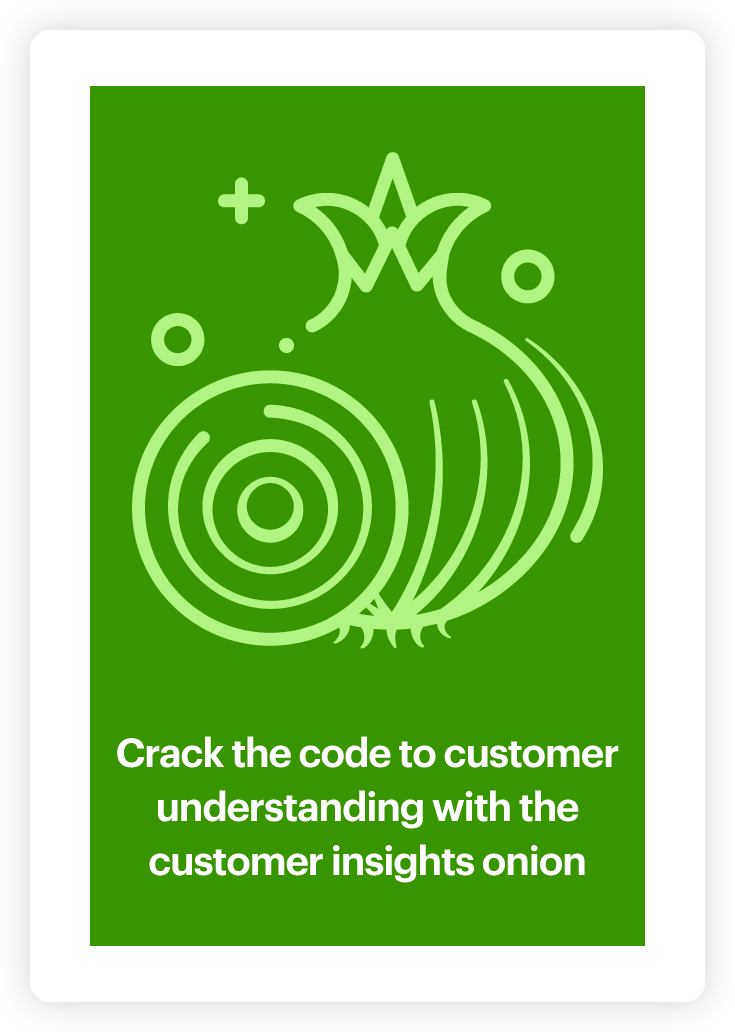Putting customers first with customer feedback analysis

Successful companies need to be customer-centric. This is made clear by the fact that companies that focus on their customers are 60% more profitable.
But what does customer centricity mean? It means taking customer feedback seriously by listening to consumers, integrating what you’ve learned into decision-making at all levels of the organization and offering products and services that match their needs, wishes and expectations. While this might sound easy in theory, the reality is many companies struggle to close this feedback loop.
Nowadays, just about every company invests in collecting customer feedback – yet many struggle to generate actionable insights from this data because they don’t have a customer feedback analysis tool that’s up for the job.
In this guide, we break down everything you need to know about feedback analysis, common real-world use cases and how you can successfully implement this type of analysis to boost your business’ success.
What is feedback analysis and why is it important?
Customer feedback analysis refers to the process of collecting and analyzing customer feedback to pinpoint how customers feel about your brand, products or services.
The goal of feedback analysis is to uncover customers’ needs, wants and pain points to improve customer experience, foster loyalty and drive repeat interactions with your business. Customer feedback analysis can also help you:
- Improve customer service
- Identify product and service development priorities
- Eliminate the guesswork from your decision-making
- Create effective strategies based on your consumer insights research
- Increase customer lifetime value, retention and loyalty by improving the customer journey
- Track and improve customer satisfaction metrics
- Amplify what consumers like about your business in marketing communications
- Personalize communications to different segments of your audience
Methods of obtaining customer feedback
Now that you know what customer feedback analysis can do for you, you’re probably wondering: What is the quickest way to obtain customer feedback and what is customer feedback? Customer feedback refers to any information customers provide about their experience with a brand, product or service. Luckily, customers readily provide this information using various channels:
- Customer feedback surveys: Surveys are among the most efficient and targeted forms of gathering customer feedback. Open-ends provide a rich source of insight while closed questions allow you to collect demographic details such as age, location and gender which can be used to segment responses into different audiences.
- Online reviews: By tapping into online customer reviews from platforms like Amazon, Google Reviews, or TrustPilot, you can access rich qualitative feedback that is often attached to a rating score.
- Customer service and chat transcripts: Telephone, email and chat conversations are direct interactions between a business and its customers. Transcripts of these interactions document concerns that customers voice directly to your brand.
- Social media conversations: Consumers use social media platforms like Twitter and forums like Reddit to discuss the good, the bad and the ugly about their experiences with different brands. Using a social listening tool, your organization can gather these organic sources of customer feedback.
How to analyze customer feedback: Customer feedback analysis examples
Once you’ve successfully gathered customer feedback data, it’s time for the actual feedback analysis. But how do you analyze customer feedback data? Let’s dive into the four most common customer feedback analysis examples:
Segmenting customer feedback in line with ratings
A great way to go about your customer feedback analysis is segmenting qualitative feedback in line with NPS, CSAT or CES scores or other satisfaction ratings.
When it comes to analyzing customer reviews a common approach involves comparing 1- and 2-star reviews to 4- and 5-star reviews. Similarly, if you’ve conducted an NPS, CSAT or CES survey, you’d want to compare the qualitative unstructured responses that accompany positive ratings against negative ones. This helps you uncover the drivers of good and bad ratings, discovering what customers value about your products and services, while also pinpointing the areas of your business that need improvement.
Comparing different audience segments
Segmenting customer feedback based on demographic aspects such as age, gender, location, occupation or behavioral factors like spend or average basket size, helps you investigate the nuances within and between different target audiences. Knowing what makes each customer group unique, will enable you to take an informed, customer-centric approach to marketing, product development and customer service.
Conducting over-time comparisons
Customer wants, needs and opinions are in a constant state of change. This is why pinpointing changes in customer feedback and sentiment over time is essential. If you’re looking to improve customer service, particular aspects of your product, or marketing strategies, you might want to compare customer feedback before and after the implementation of these changes to see if your changes have had the desired effect.
Customer sentiment and emotional analysis
Sentiment analysis is especially useful when generating customer insights from social media conversations and other customer feedback data. By classifying text as positive, negative or neutral, you can pinpoint how customers feel about your products, services or the brand as a whole. Some tools offer emotional analysis capabilities that add even more sophistication and nuance to the analysis process by going beyond the good vs. bad spectrum and notating the specific emotions associated with feedback responses.
A real-life example of customer feedback analysis
Leading home furniture retail company DFS wanted to better understand their customers’ experience with live chat support. Using live chat transcripts they compared high-scoring chats vs. low-scoring chats to highlight the differences in the language used by their agents. Equipped with this knowledge, DFS was able to create a new training strategy for chat agents to foster highly-scored and profitable customer interactions. They also adapted their live chat language to replicate the language of the customer.
The challenges of customer feedback analysis and how to avoid them
As with any type of analysis, customer feedback analysis doesn’t come without its challenges. That being said, there are two main challenges you may face during the analysis process:
1) generating customer insights that are truly actionable
2) sifting through masses of feedback data manually
But don’t fret – by applying the right strategies these challenges are easily managed.
To ensure you’re gathering customer feedback that will enable you to generate valuable, actionable insights, you need to ask customers the right questions at the right time. For instance, if you want to find out what customers think about your new product send out the respective survey once they’ve actually received their product and started using it. You should also ensure that your insight fulfills the four features of a good customer insight: focused, actionable, authoritative and surprising.
Generating meaningful insights from customer feedback requires masses of qualitative feedback data, making it nearly impossible to conduct analysis manually. Luckily, there’s a better solution than struggling through the process of manual coding or, even worse, ignoring the treasure trove of qualitative feedback: using a customer feedback analysis tool to automate the most time-consuming and cumbersome aspects of the analysis process.
Easily generating insights with customer feedback analysis tools
Customer feedback analysis tools use AI and natural language processing to understand customer feedback and detect linguistic patterns within qualitative data. A customer insights platform processes large volumes of feedback data and uncovers powerful insights within minutes. Using a customer feedback analysis tool not only saves your insights team valuable time that they can invest in data-driven storytelling, it also mitigates the potential for bias and error inherent in manual coding.
Driving action with customer feedback analysis
Now that you know everything you need to know about customer feedback analysis, it’s important to consider how you’ll go about driving action.
Make insights matter to stakeholders by crafting a narrative that identifies the who, what, why and what’s next in your insights. To do this, it’s important that your analysts have a strong understanding of stakeholder objectives so that they can articulate insights in a way that will resonate and drive action. Business decisions that reflect your customers’ needs, wants, expectations and concerns will ultimately help boost customer retention and loyalty and increase revenue.
Are you ready to become truly customer-centric by leveraging customer feedback analysis? Download our customer insights framework and template or book a no-commitment discovery call with one of our experts!
